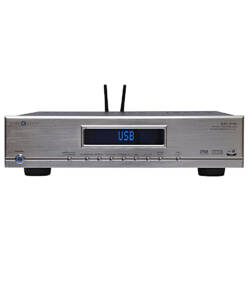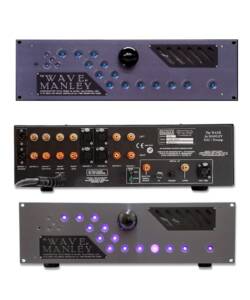Lumin D3 Streamer/DAC
Original price was: R88,000.00.R42,000.00Current price is: R42,000.00.

 Building on the earlier D2 platform, Lumin’s equally compact D3 model features a new processor, new DAC, LeedH volume control and support for increased file sample ratesIt’s not only loudspeaker brands playing the trickle-down technology game. Lumin’s D3, its new entry-level streaming DAC, borrows liberally from the Hong Kong manufacturer’s costlier network hardware, utilising elements both inside and out to effect a comprehensive upgrade on the previous D2 [HFN Jul ’20]. Its maker says the D3 ‘brings the audiophile potential of music streaming within everyone’s reach’, and while the £2195 price tag makes that somewhat debatable, it certainly has plenty of appeal.
Building on the earlier D2 platform, Lumin’s equally compact D3 model features a new processor, new DAC, LeedH volume control and support for increased file sample ratesIt’s not only loudspeaker brands playing the trickle-down technology game. Lumin’s D3, its new entry-level streaming DAC, borrows liberally from the Hong Kong manufacturer’s costlier network hardware, utilising elements both inside and out to effect a comprehensive upgrade on the previous D2 [HFN Jul ’20]. Its maker says the D3 ‘brings the audiophile potential of music streaming within everyone’s reach’, and while the £2195 price tag makes that somewhat debatable, it certainly has plenty of appeal.
Firstly, there’s the form factor. The D3 – like the D2 – measures a neat and tidy 30cm wide and 24cm deep and can be lifted from its box with one hand. From that moment on it continues to be easy to live with, helped by a slick custom app that handles both control of music playback and configuration of hardware settings. A feature of all Lumin’s streamers, and recently adopted in part by Audiolab’s 9000N [HFN Mar ’24], it puts some other rival streaming apps to shame.
Platform Change
The D3 occupies the entry position in Lumin’s range of network player/DACs, below the £4195 T3 [HFN Apr ’23], £8995 P1 [HFN Jul ’22] and flagship X1, a two-box design with external PSU selling for £11,495. It’s not the company’s most affordable option, however, that being the U2 Mini, a transport-only streamer available for £1995. Lumin previously also sold an all-in-one streamer/DAC/amp, the M1, but this has been discontinued. There is still a power amp option, rated at 2x160W/8ohm and named simply ‘Amp’, but at £10,995 and twice the size it doesn’t feel like a perfect partner for the D3.
As regards changes implemented for this third-generation model (the original D1 arrived in 2015), it might be simpler to outline what hasn’t changed. This includes the general aesthetic design, although the black or silver casework now gets the ‘silky surfacing’ finish introduced on the P1 and is entirely aluminium rather than incorporating steel elements. The small text-based info display is retained, showing track title, sampling rate, etc, just as the physical connectivity still comprises balanced and single-ended outputs, two USB-A sockets for connection of external drives, and a coaxial (BNC) output, all tucked into the rear panel.

Beyond that, Lumin has completed a substantial overhaul of its D series model, building it around the new hardware/software platform seen in the T3 where ‘increased processing power and storage capacity provide greater resampling flexibility and future-proofing’. This means resampling now extends to DSD256 and 384kHz PCM, versus the DSD128 and 192kHz of the D2, and the D3 will also handle those new higher sample rates natively thanks to Lumin upgrading its dual-balanced DAC architecture to one of the ESS solutions (the ES9028PRO in this instance).
Ode To Joy
In the D3 this DAC stage feeds into a newly designed analogue output utilising buffer technology from the flagship X1. Furthermore, the streamer gets a LeedH digital volume control – a third-party system developed by Gilles Millot (www.acoustical-beauty.com) and present on other contemporary Lumin models – that was absent from the D2 at launch.
As well as the resampling mentioned earlier (plus PCM/DSD transcoding), the latest streaming/processing platform introduces MQA support (full/core decode and passthrough), Tidal Connect and Spotify Connect, Apple AirPlay 2, and UPnP. The D3 is also Roon Ready and can even stream content from a Plex server.
Because operation of the unit is entirely app-driven, and Lumin continues to eschew Wi-Fi functionality across its products, a wired network connection is required in order to get everything up and running. If there’s nothing in the D3’s Ethernet socket when you switch it on, the front-panel display lets you know. Once connected, the streamer then declares itself ‘Ready for music’. Little touches like this contribute to the D3’s joy of ownership, as does the stable relationship between Lumin’s app and its hardware. One niggle? The lip that extends over the D3’s rear-side connections, and lack of space, makes disconnecting XLR cables awkward.
Inside Story
Lastly, it’s perhaps worth highlighting differences between the D3 and the recently launched Audiolab 9000N, in light of Internet chat about the latter’s ‘it’s a Lumin inside’ nature. Lumin’s new model is the more affordable of the two by £300-ish and includes dual DACs, the LeedH volume control and more extensive resampling. Audiolab’s solution enables streaming over Wi-Fi, filter selection from its single ES9038PRO DAC, and has a colourful, customisable display. In other words, these are two very different products.
![]() Open Arms
Open Arms
Slick control and usability wouldn’t count for much if the D3 delivered a performance unworthy of its price tag, but Lumin’s streamer doesn’t drop the ball here. With its extensive resampling/transcoding options offering scope for ‘sound seasoning’, particularly of 44.1kHz/48kHz media, and its DAC supporting hi-res DSD files, it throws its arms wide open to – most likely – all your music, and then gets to the heart of it through a clean, revealing performance.
Its transparency can even be a little unnerving at times as the D3 has the habit of exposing the ‘flaws’ in some tracks that might sound more agreeable on other systems. For example, it was hard to really enjoy Kingdom Come’s Led Zeppelin pastiche ‘Get It On’ from their self-titled 1986 album [Polydor], because where the production aims for cavernous, epic soundstaging the D3’s ruthless unearthing of its excessive reverb just made the German group sound as if they were playing an empty arena. Similarly, I’ve heard ‘warmer’ renditions of Aerosmith’s ‘Back In The Saddle’ [Rocks; Sony Music 48kHz/24-bit] that gave its rollicking basslines a little more punch.
Most of the time, however, the D3 is a delight to listen to regardless of musical genre. ‘Miss You’, an eight-minute power ballad by Sunset Strip stalwarts W.A.S.P [Golgotha; Napalm Records], segues from gentle guitar and percussion in its opening verse/chorus to pounding, distorted rock capped by an astonishing Doug Blair guitar solo – the D3 flips easily between the two, sounding rich in detail and focus at the start, weighty and aggressive at the end.
‘Nebraska’, the title track from Bruce Springsteen’s recorded-on-a-four-track 1982 set [Columbia, 192kHz/24-bit], arrived warts and all, Lumin’s D3 streamer giving a fine portrayal of The Boss and his acoustic guitar, with texture to the strings and a rasp of the harmonica that bordered on strident. Tape hiss on this budget recording robs it of dynamics, but Greg Allman’s solo take on his earlier band’s ‘Midnight Rider’ [Laid Back; Island, 96kHz/24-bit] sparkled against a black background. The bass guitar sounded rich and syrupy, providing a foundation for smooth keyboard licks and Allman’s well projected vocal.

There was a similar feel to the Lumin D3’s delivery of Billy Joel’s ‘Piano Man’ [Piano Man; MFSL, 88.2kHz/24-bit], where the plump bass notes and fulsome piano chords made for an inviting listen, but the clarity of his singing – and the harmonica accompaniment – ensured it sounded open and dynamic, rather than homogenous.
Coming Clean
Lumin doesn’t make use of the filter options provided by the ES9028PRO DAC, but tweakers can experiment with its in-house resampling/transcoding. Downsampling (from 384kHz to 48kHz, for example) lets the D3 be used as a transport into a legacy outboard DAC. On the flip side, upsampling and format conversion bring the allure of sound quality improvements.
My listening yielded no eureka moment, although on Dire Straits’ Love Over Gold [EMI], streaming over Tidal/Roon in plain vanilla 44.1kHz/16-bit, the introductory keyboard and thunder effects of ‘Telegraph Road’ sounded very slightly ‘fuller’ transcoded to DSD256. As always, mileage extracted from such user adjustment will depend on personal preference and the wider playback system, and credit is due to Lumin for making this element of its platform comprehensive and easily managed.
Moreover, even if you opt for a ‘native’ performance, the D3 sounds effortlessly clean, with no hash to its highs or ponder to the low-end. It isn’t the last word in sheer openness and ‘air’, but small treble elements are always easy to discern, bringing pleasing impact to percussion in particular. On ‘Industrial Disease’ from the Dire Straits album, rim shots and hi-hat strikes cut through the synth background and blues guitar. And this clarity pays dividends in terms of imaging.
The recent Boston Pops Orchestra: John Williams [UME] features the film soundtrack composer waving the baton through various career highlights, plus some from others, and the D3’s handling of it was largescale and thrilling. His version of Jerry Goldsmith’s slow-moving Aliens theme was impressive, its undulating strings delivered with spine-tingling atmosphere, on a soundstage with plenty of width and depth.
The march from Raiders Of The Lost Ark – led by its familiar brass motif – was even better. It enjoyed genuine heft, but amidst all the drama, the D3 also reminds you of Williams’ playful nature, spotlighting the track’s delicate glockenspiel and flighty rhythmic feel, so you really appreciate his ability. Lumin’s D3 is nothing if not insightful.
Hi-Fi News Verdict
Not for Lumin an entry-level model that’s the runt of the litter, for the new D3 is closer to the company’s step-up T3 DAC/streamer than the £2k price difference suggests. Wide-ranging file compatibility, extensive resampling options and bespoke app control contribute towards this unit’s ‘bargain’ status, and the deal is sealed by its performance. Grab an audition – and take your credit card along…
 ▌ D3 THIS GROUP ALSO INCLUDES its latest file player, the D3 model. It is the lowest-priced player from this manufacturer – above it in the price list are still the T3, P1 and X1 models. It replaces the D2 model in the price list, which was offered for as long as six years, which is almost an eternity in computer audio (more → HERE). ⸜ DIGITAL SECTION • This unit, like all of the above, uses this manufacturer’s new streaming platform, allowing playback of PCM files up to 384 kHz and DSD files up to DSD256. It was introduced first in more expensive models, then migrated to the lower ones. It is Roon Ready certified and supports Spotify Connect, MQA, TIDAL, TIDAL Connect, Qobuz and TuneIn internet radio streaming services, and is AirPlay 2 compatible. This device offers exceptionally good digital volume control called LEEDH PROCESSING. This is a circuit that converts the input signal into 32-bit words and adjusts their amplitude at this resolution. It has been available in Lumin devices since mid-2020, when the company released software version v13. It’s worth remembering that if you use this option, the DSD signal is converted to PCM, then adjusted and converted back to DSD before the D/A converter section. So in this one case, it’s not exactly a purist solution. Interestingly, the latest software (Version 17) allows playback of files called Max, recently available on Tidal. These appear to replace high-resolution MQA files. For now, they are being introduced with new titles, but it is likely that they will gradually replace Master Quality Authenticated files. Ultimately, Tidal may thus become similar to the Qubuz service in this regard. As I said, the basis of the D3 is the same digital platform as in more expensive players. It accepts almost any type of audio files: FLAC, FLAC MQA, WAV, DSD, Apple Lossless (ALAC), AIFF and mp3. The device is also equipped with Lumin algorithms that convert PCM and DSD signals into other types of signals. Both DSD and PCM can be upsampled up to DSD256 or PCM 384, and can be down-sampled to send them through the BNC digital output. We can playback files from local disc through two USB sockets, but also through UPnP AV network protocol with OpenHome extension, connecting via Ethernet cable to a router and NAS drive. The manufacturer has not provided for the possibility of transferring a digital signal to the D3, so we can’t use, for example, a computer as a source of signal. However, it is possible to output digital signal via a BNC jack. This output is limited to PCM signals up to 192 kHz and 24 bits, and DSD (DSD64) via the DoP protocol. ⸜ ANALOG SECTION • The signal is output via two types of jacks: XLR and RCA. Since the design of the D3’s analog stage is symmetrical, it’s worth trying out which option is better for your system. I always choose RCA outputs, but it may be different in your case. The maximum output voltage is 3 V for RCA and 6 V for XLR, which is higher than the Compact Disc standard requires. ⸜ CONTROL • Communication with the player is done exclusively through the company’s control app Lumïn App. It is sensibly laid out and I got used to it. It is available for both smartphones and tablets running iOS and Android. However, as I wrote on the occasion of the T3 player test, Roon’s app has set the bar much higher, and a solid Lumïn app update would be useful (T3 test → HERE). Even more so because it works just as brilliantly with the company’s JPLAY application (more → HERE). ▌ SOUND ⸜ HOW WE LISTENED • The Lumin D3 audio file player stood on the top carbon shelf of the Finite Elemente Pagode Edition Mk II rack on its feet. They are made of aluminum lined with felt. Therefore, to keep it from slipping, I placed Acoustic Revive RKI-5005 anti-vibration pads under them. On its top panel I placed a Verictum X Block passive EMI/RFI filter. Its sound was compared to an AYON AUDIO CD-35 HF EDITION SACD player and a LUMIN T3 file player.  » Recordings used in the test ⸜ a selection ⸜ JOHN SCOFIELD, Uncle John’s Band, ECM Records/Tidal, FLAC 24/96 (2023). » The recordings featured in the test can be found on a playlist on the streaming service TIDAL → HERE. The COMPANY’S PLAYERS have come a long way since the first player in its history, bearing simply the name Lumin. I vividly remember meeting it, listening to it and my infatuation with sound so different from anything offered by other companies that it was addictive. The sound wasn’t perfect, that’s not the point. Nor was it particularly neutral. And yet… (more → HERE). The thing is that its designers were fascinated, on the one hand, by Linn file players, the afterimage of which today is only the chassis of the devices, referring to what the Scottish company’s players looked like at the time, and on the other hand, by DSD files, which the Scottish idol did not want to hear about at the time. With all this in mind, they prepared a device that plays as soft, as warm, as friendly as no other file player on the market. Compared to it, almost all other devices seemed harsh and soulless. The path I’m talking about was Lumin engineers’ quest to overcome the limitations of early models. They were concerned with adding resolution, definition and with “cleaning up” the sound. And these were good changes. Although, on the other hand, we lost something – we lost what this company brought to audio at the very beginning. And only the latest generation of its products, including the T3 model I use, and, after all, the much cheaper D3, return to density, to warmth, to natural sound attack, but already on new terms. Because with much higher resolution. The first sounds of Bill Stewart’s drums and then JOHN SCOFIELD’s guitar on the ˻ 1 ˺ Mr. Tambourine Man, featured on the guitarist’s latest album, entitled Uncle John’s Band, were enough to bring out the best in Lumin. Indeed, the presentation had a very nice fill and was incredibly colorful. To some extent, the darkening of the sound, so characteristic of early models from this manufacturer, returned, but not as a withdrawal and softening of the treble, but as a deepening of the blackness behind the sounds.  Whatever one may say, however, the D3’s presentation is built on a strong foreground. Instruments are big and substantial with it. This is the opposite of what is offered by many other manufacturers, even established ones, who fail to understand that the sound must be both clear and filled in to be perceived as natural. Let’s play the D3 in any well-composed system, and we’ll see that this little thing can build a presentation with the scale we associate with large, heavy, technology-soaked products. Oh, how great the big band sounded thanks to this, recorded by the Japanese on the Big Band Scale album featuring the KENICHI TSUNODA BIG BAND! Released by Warner Bros. Japan, the album is a display of dynamics and fullness. The D3 played it brilliantly precisely because it can deliver powerful, dense upper bass and lower midrange beautifully. The highs are strong with it and have just the right amount of weight, but are not pushed to the foreground. They are not rounded off, they have a clear, fast attack, so it’s not a matter of softening them. I would say, however, that they have a “golden glow” rather than a “silver sonority,” if you know what I mean. I highly recommend this album to you, especially since it is now available on Tidal in 24/96 FLAC format, without MQA encoding. This, by the way, is one of the biggest changes I’ve encountered in streaming lately. Tidal still offers hi-res FLAC MQA files, but is apparently trying to move to files without encoding, after the patent holder of Master Quality Authenticated announced financial problems. In any case, both Scofield’s previously listened to and Kenichi Tsunoda’s now-listened-to big band played brilliantly thanks to it. While I know and like MQA, it is not always the solution to all problems. |
The D3 plays full bandwidth with flair, creating big, cool, tangible sound sources. And this is true not only with purist recordings, but also with heavily “produced” ones, like the latest album by the SMOLIK/KEV FOX duo entitled Belly of the Whale. Fox’s vocals are not as strong and at the same time clear on this album as on their previous one, as they were blended more strongly into the mix, which Lumin showed nicely. It didn’t bring it out artificially, despite the fact that it does, after all, play with the strong range in which the Brit operates his voice.  For some reason, its sampling is 88.2 kHz. So it seems that this is how the entire album was prepared, and for some reason the publisher decided that we won’t get full studio resolution, and the mastering engineer forgot to down-sample this one track. With MQA, this would not be possible because, at least in theory, authorization of such files requires the publisher to provide the original “master” file. But it could also be that assumptions were made, and we didn’t know what was actually happening to the files before they got to us. This, by the way, is a big problem – their absolute anonymity. Returning to the player, I would like to add a few more words about the low sounds. They are powerful, full, dense and somewhat soft. So they won’t be as clear in attack and as selective in sustain as with the previous generation players from this company, nor as from Linn or Aurender devices. It’s just a different type of playing. But that’s what makes it sound so cool. That’s why we have such a large scale. And it’s the reason why all recordings are lively, booming, spacious with it. This is because the softness of the bass is countered by high dynamics. For example, if the bass drum of the drums in PAUL MAURIAT’s orchestra hits, it’s a fast, powerful pounding, without the “tail” dragging behind it. I bring up Mauriat’s name because a great compilation of his hits is available on Tidal. And, let me remind you, he is one of Italy’s best-known conductors, who became famous in the late 1960s with his, orchestral version of André Popp’s hit Love is blue. And before that, he was the longtime artistic director of Charles Aznavour and Maurice Chevalier, and also worked with Petula Clark. It is really worth listening. ⸜ LEEDH PROCESSING • Leedh Processing is an algorithm featured in DSD circuitry, allowing you to change the volume level. The is a truly high-end chip and the GILLES MILLOT responsible for it knew what he was doing. Keep in mind, however, that although it is the same algorithm, implemented in different devices it will give different results, as these depend on the performance of the processor and on its power supply. In the D3, however, it performs exceptionally well. The sound is brighter than with an external preamp, and the bodies are not as three-dimensional. On the other hand, however, dynamics and a strong foreground are preserved – each album is still an immersive, big event. The bandwidth with the Leedh is more clearly stretched toward its extremes, as both highs and lows are a bit stronger. Interestingly, the latter, while not as saturated as with the external preamp, are better focused and have higher precision. Leedh Processing isn’t as resolving as high-end analog preamps, but it may prove to be better than the volume control in many integrated amplifiers in its price range. It slightly blurs the separation between instruments, I hear it every time with the digital volume control, but it’s not as pronounced as I thought. So it’s worth trying the D3 with a power amplifier or active speakers. You’ll have to spend as much on the preamplifier as on the player itself for it to turn out better in this regard. ⸜ UPSAMPLING • I tried all upsampling options that the test player offers. If you use the volume control, it is better to leave the fs shift in the “native” position, but change the bit depth to 24 bits. On the other hand, when we do not use it, we have two options. If we want a deeper, more velvety sound, let’s upsample the signal. However, if we want it to be a bit more contoured, to have a more pronounced attack, then let’s use upsampling, but sticking to PCM for PCM files and DSD for DSD. ▌ Summary LUMIN’S D3 PLAYER offers an excellent resolution and tonality. It plays any kind of music with commitment and panache. It has limitations, that much is clear. They consist primarily, in the not entirely clear farther planes and in bringing different recordings closer together in terms of tonality. It will always be big, dense and warm playing. Even with such heavily compressed material as the debut album by ROBBIE ROBERTSON, Dylan’s guitarist and co-writer of the – nomen omen – The Band’s songs. It’s a great album, recorded with U2 and Peter Gabriel’s musicians, produced by Daniel Lanois, but it has heavily flattened dynamics. D3 didn’t change anything in this measure, but – on the other hand – saturated it with colors, making listening to it highly enjoyable . And so it was until the end of the listening, each time something in the sound was “turned up”, improved. Which reminded me of the company’s first devices. But it’s not the same presentation as it was then. Now we get a much clearer and crisper sounding device, which nevertheless retains the warmth, density and scale that I liked so much in the older players from this manufacturer. That’s called progress. ▌ DESIGN ALL LUMIN DEVICES share a similar external design that has hardly changed since the launch of its first player in 2013. They are undersized products in aluminum housings with an alphanumeric display on the front panel, over which a blue filter has been applied. The modifications are that the more expensive models have thick, milled front panels and aluminum plates on the rest, while the cheaper feature flat fronts and chassis made of bent, though also aluminum, sheet metal. The D3 uses the anodizing previously tried on the P1 player, which the manufacturer says is supposed to be more resistant to damage. The player can be purchased in silver or black. ⸜FRONT AND REAR • The D3 belongs to the latter group, in addition to being smaller than, for example, the T3. It measures 300 x 244 x 60 mm and weighs 2.5 kg, so it’s really small. On the front, all we have is the aforementioned display, which reads the name of the artist, album and song, the file type and sample rate along with the bit word length, as well as playback time information. In the device’s app, we can change this and then the volume level will be shown. The sockets are hidden at the back, under the protruding top panel, a feature once inspired by Linn devices, and which Lumin has consistently used to this day. The sockets are very nice, high quality, screwed into the chassis. The RCA and BNC are gold-plated, and the latter are from the American company CMC – Charming Music Conductor. The CMC-2.5F model is made of pure 4N copper plated directly with gold. Next to the outputs, a grounding terminal is also mounted. It is not very convenient, because it accepts only spades, and there is not much space there. I think a clamp that accepts bananas would work better. ⸜ INSIDE • The electronics are housed on a single circuit board, occupying almost the entire bottom of the case. The individual component blocks are clearly distinguished on it. At the RJ45 input is a file transport module, with a microprocessor hidden under a small heat sink. This chip, along with additional memory modules, was soldered on a small circuit board, plugged to the main one using pins. On the side there is an Altera Cyclone IV FPGA (FPGA = field-programmable gate array). It’s where Leedh Processing’s upsampling and volume control algorithms operate. The second part of the board is taken up entirely by the DAC. At its input you can see a nice ESS SABRE32 ES9028Pro chip, allowing it to work with PCM files up to 24 bits, 384 kHz and DSD files up to DSD256. Next to it you can see circuits additionally stabilizing the voltage for it. And then we have a very nice balanced analog track.  I would add that the BNC output was preceded by a driver and a matching transformer. And also that the switching mode power supply is a Lumin’s own development. ● |
Description
▌ Technical specifications (according to the manufacturer)
Streaming protocol: UPnP AV
Supported file types:
– DSD: DSF, DIFF, DoP
– PCM: FLAC, Apple Lossless (ALAC), WAV, AIFF
– Compressed: MP3, AAC (in M4A container)
Sampling frequencies, word lenght:
– PCM, 44.1 – 384 kHz, 16 – 24 bits, stereo – DSD, 2.8 (DSD64) – 11.2896 MHz (DSD256), 1 bit, stereo
Digital outputs:
– BNC S/PDIF
” PCM 44.1 – 192 kHz, 16 – 24 bits
” DSD (DoP, DSD over PCM) 2.8 MHz, 1 bit
Inputs: Ethernet Network 1000Base-T, USB (storage)
Output voltage: 6 V XLR (hot = 2) ⸜ 3 V RCA.
Dimensions (W x H x D): x 300 x 60 x 244 mm
Weight: 2.5 kg



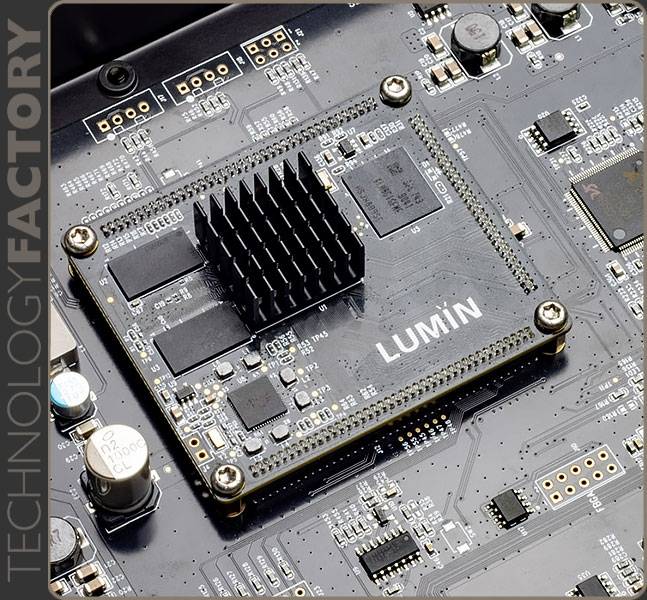
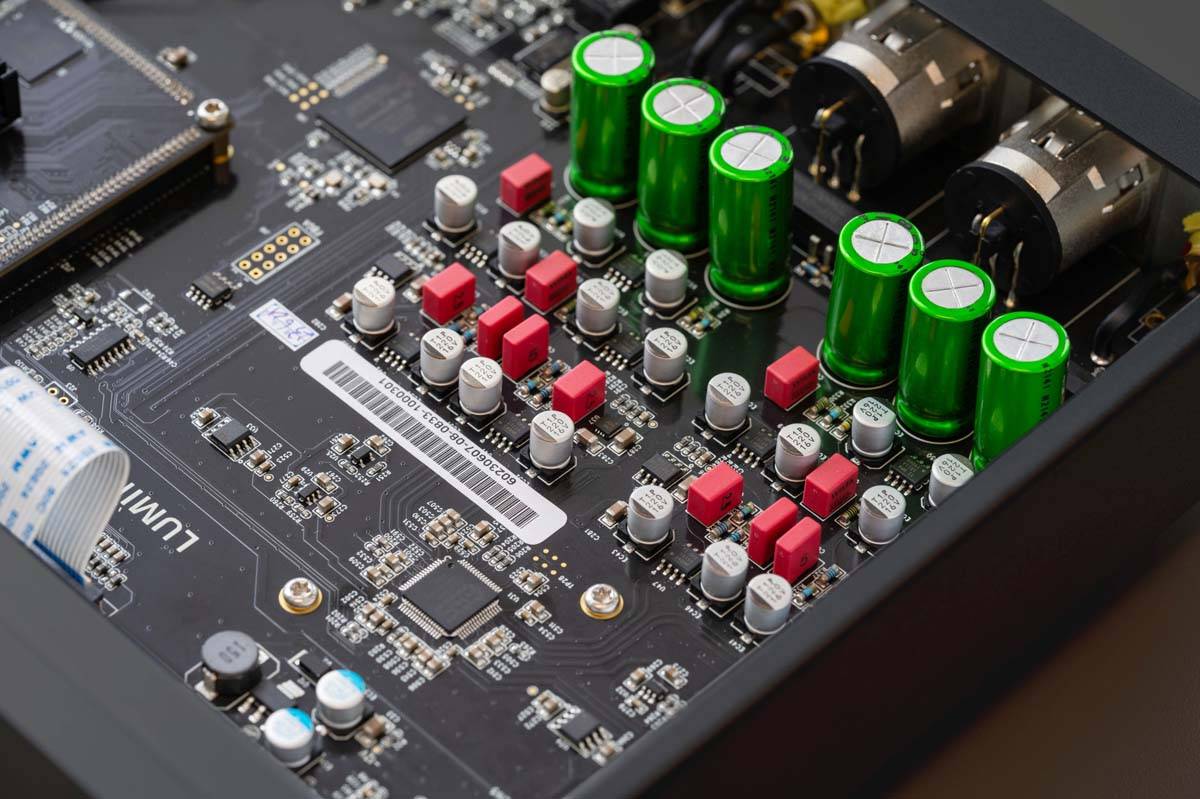
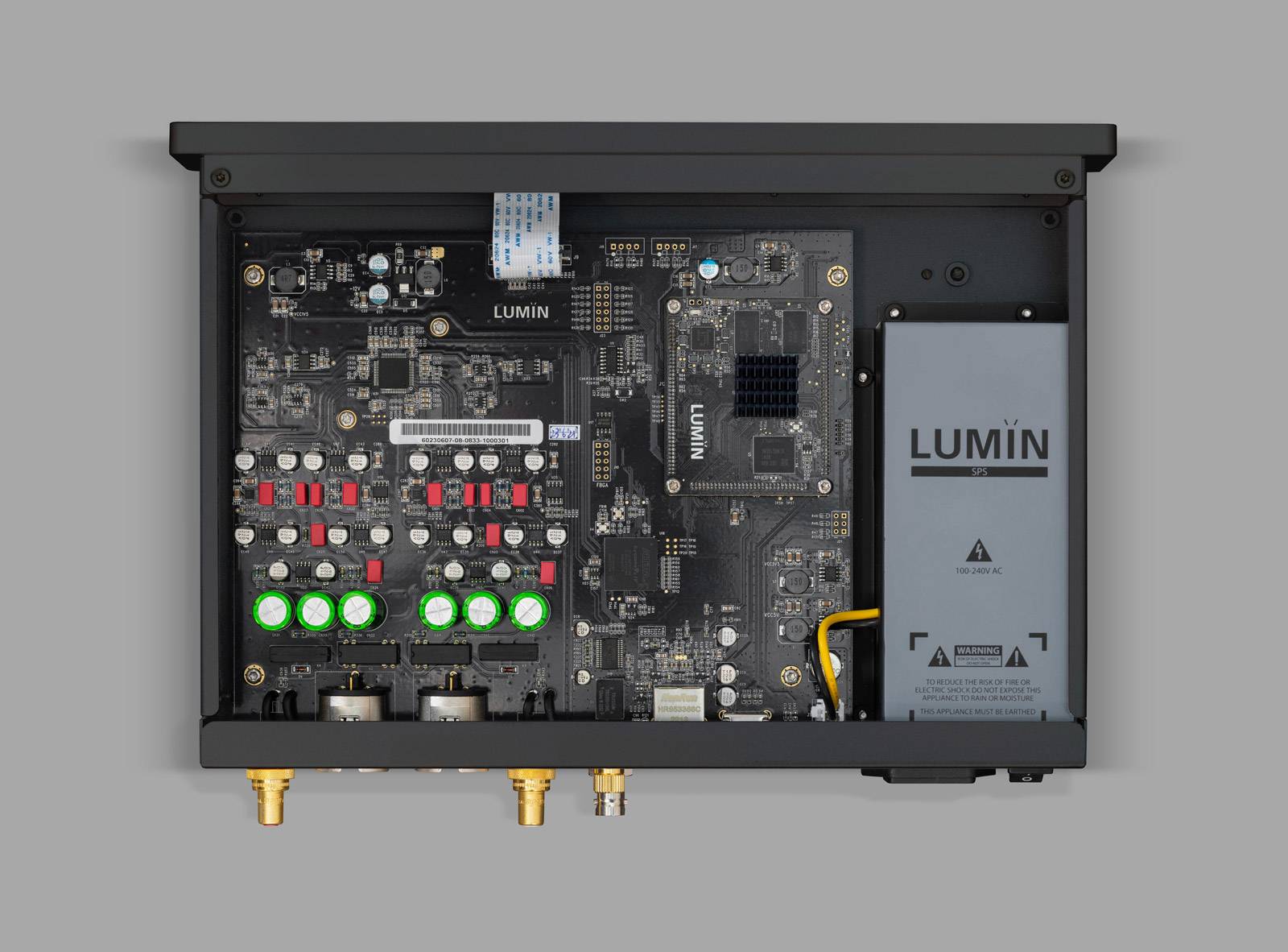
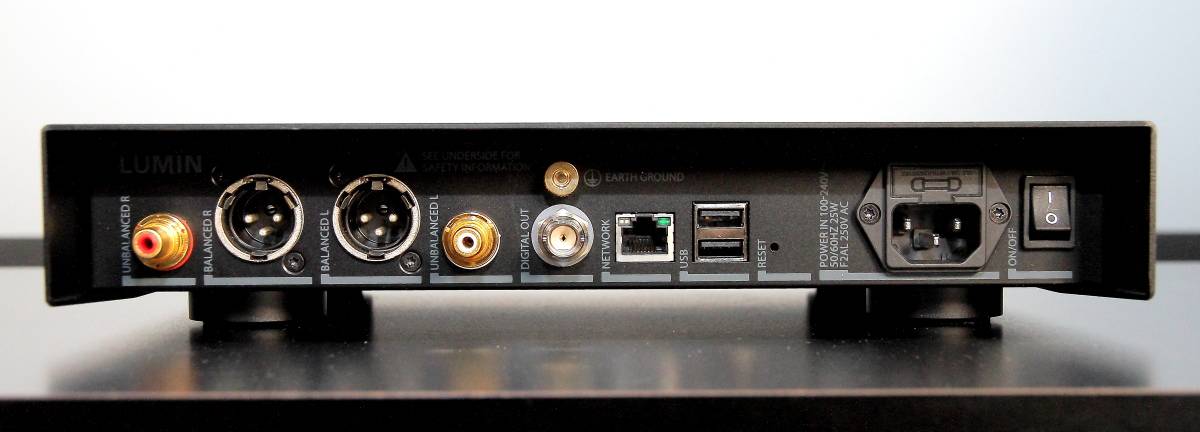
 VERY much like the large, beautiful OLED and AMOLED displays that companies such as Aurender, AURALiC and HiFi Rose install in their players and file transports. The cover art displayed on them, as well as titles and other information catch the eye of anyone sitting in front of the device in question. As I say – I like them. Only that not in my room, not in the system I use on a daily basis, but only when I am testing something of this type or when I am “visiting” other audiophiles.
VERY much like the large, beautiful OLED and AMOLED displays that companies such as Aurender, AURALiC and HiFi Rose install in their players and file transports. The cover art displayed on them, as well as titles and other information catch the eye of anyone sitting in front of the device in question. As I say – I like them. Only that not in my room, not in the system I use on a daily basis, but only when I am testing something of this type or when I am “visiting” other audiophiles.
